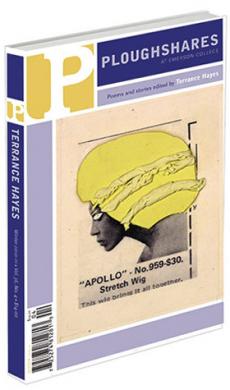Introduction: The Sentenced Museum
“This is the kind of museum I want to make . . . a museum where those
seeking enjoyment can enjoy, those seeking to ponder can ponder, and
those seeking to feel can feel.”
—Hayao Miyazaki
Suggesting the essential role perspective plays in aesthetics, the three main floors of the Sentenced Museum’s permanent collection are organized according to the three view points represented in Vincent van Gogh’s 1888 painting of his bedroom in Arles. You may recall the vibrant colors of that scene, but think also of the mirror, the window, and the framed painting on the bedroom’s far wall. Somehow the painting is not quite a still life. Rather, it fronts stillness the way a sentence fronts stillness. It does not involve what you see, but how you see it and why.
The first floor of the museum features literature primarily concerned with self-reflection. Which is not the same thing as self-absorption, mind you. You will find introspective sentences by the likes of Frank O’Hara (“Ah lunch, I think I am going crazy.”) and an elegant sound-based installation of “Sonny’s Blues” by James Baldwin. You will find this stupendous Plath sentence: “They are panes of ice, // A vice of knives, / A piranha / Religion, drinking // Its first communion out of my live toes.” That’s hot, right? That’s what this place is all about.
The second floor features the language of witness. There are wheelbarrows, rain and chickens, of course, but the political world is also represented. Ropey ladders made of sentences by Pablo Neruda and Audre Lorde swing from the windows. Some viewers never make it beyond this floor because so many of the sentences are interactive calls to action. If this is too provocative for you, you can sit in the museum’s planetarium listening to a stream of sentences about evening. You can hear, for example, Mark Twain’s Huck declare: “Towards night it begun to darken up and look like rain; the heat lightning was squirting around low down in the sky, and the leaves was beginning to shiver—it was going to be pretty ugly, it was easy to see that.” (That’s a political sentence too.)
The third and largest of the floors (The museum is an architectural wonder, shaped like an inverted pyramid.) is where perspective is predominantly a matter of the mind’s eye. You will find the musings of visionary writers like Clarise Lispector (“Everything in the world began with a yes.”). There is a working hyper-empathy machine inspired by Octavia Butler’s Parable of the Sower. When you crawl on your hands and knees through a tiny door, you enter the literal text of Robert Coover’s lovely book: The Grand Hotels of Joseph Cornell. Many of the words associated with this floor are often found kicking it in other parts of the museum.
You could spend happy years cruising the tangential parlors, wings and galleries of the Sentenced Museum. In the “Action Figures of Speech Room” Galway Kinnell’s acrobatic triple “is” sentence (“Whatever / what is is is what / I want.”) floats beautifully beside Christopher Gilbert’s triple “that” (“That that that all day the vulture overhead was / screeching…”). In the lobby’s museum store, you can purchase the favorite words of authors, like William Faulkner (“wisteria”) and, for a bit more money, tiny jars of Lucile Clifton’s pristine punctuation marks. The museum houses some of the longest, shortest, and oldest sentences ever written, as well as a surprising number of downright egregious sentences. Some say imperfect lines don’t belong in a museum, but I think a sentence’s shortcomings make it human. And anyway this museum is not after perfection. Perfection is not only oppressive, it’s boring. One should move through a museum at what Didier Maleuvre calls the “tempo of consciousness”:“the dreamy pause, the regress and ingress of reverie, the winding progress that is engagement.” The same should be said of a truly fine sentence. Sentences, like museums, hold everything the imagination can hold.
So, Welcome. The collection before you will be in the museum’s rotating gallery of “Dynamic Contemporary Parlance” for the next months. Some of the sentences that are not on display are being consolidated for future exhibits. Other sentences, individually wrapped and boxed with exquisite care, are being transported across the city as we speak. Should you encounter a particularly perplexing work, please feel free to move on to the next piece, and then maybe circle back later. If you leave this museum with even one dynamite sentence, a word, or couple of lines stitched into the side of your head, well, that would be a special bit of magic to accompany you through the rest of your day.
